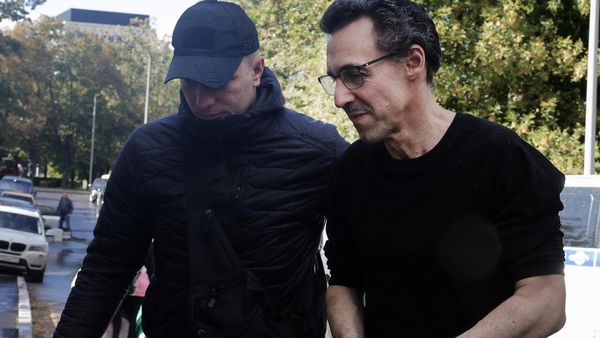
The arrival of an asylum seeker boat in Western Australia has reanimated political debate about asylum policy and the treatment of people who arrive by boat seeking protection.
At least 40 men, believed to be from Bangladesh, India and Pakistan, have arrived by boat on the northern Kimberley coast. Border Force has not confirmed details, only that it was “undertaking an operation in the north-west of Western Australia”.
The prime minister, Anthony Albanese, said Australia’s asylum policies were unchanged: “Our position on Operation Sovereign Borders is very clear, and people who attempt to arrive here by boat will not settle here.”
But the opposition leader and former home affairs minister, Peter Dutton, said the Labor government had “lost control” of the country’s borders.
“I know exactly how these people smugglers work,” Dutton said. “They will react to a weak prime minister and to a weak minister. If they see vulnerabilities, they will exploit them, and that’s exactly what has happened here.”
What is Operation Sovereign Borders?
Operation Sovereign Borders refers to a military-led response to asylum seekers and refugees arriving in Australia by boat, proposed by the Tony Abbott-led opposition in mid-2013 and then enacted by the Coalition once in government.
According to the Coalition’s policy document, the main measures were to:
Reintroduce temporary protection visas for people found to be refugees
Hold asylum seekers in detention on Manus Island and Nauru while processing their refugee claims
Instruct the Australian defence force to turn back boats “where it is safe to do so”
Did Labor always support this?
No. In 2007 Labor was elected promising to end the “Pacific solution” of offshore processing, and instead hold asylum seekers at Christmas Island while processing their refugee applications.
After the number of asylum seeker boats arriving began to increase again, Labor reintroduced offshore processing on both Nauru and Manus Island in Papua New Guinea. This element of the policy has had bipartisan support since before the 2013 election.
In 2016 Australia’s offshore processing regime on Manus was found to be unconstitutional by the PNG supreme court and the next year the Australian government was forced to pay more than $70m in compensation to those who had been illegally detained there. Australia and Nauru retain an agreement for an “enduring” form of offshore processing on the Pacific island state.
TPVs?
The difference that remains between Labor and Coalition concerns temporary protection visas. Labor abolished temporary protection visas (and the temporary “safe haven enterprise visas” for more than 19,000 people in February 2023, fulfilment of an election pledge.
But these only applied for asylum seekers who arrived by boat before 19 July 2013, and so belong to a different cohort, who were not sent offshore. Since 19 July 2013, both Labor and Coalition agree that asylum seekers who arrive by boat to claim protection will never resettle in Australia.
(Asylum seekers who arrive by plane are able to apply for permanent protection visas.)
Boat arrivals
The number of people arriving by boat has waxed and waned since the 1970s. There was an uptick in arrivals over 1999-2001 (peaking in 2001 at 5516), followed by an even larger increase in 2012-13 (20,587 people, on 300 boats arrived in 2013).
The numbers since then have been substantially lower. Zero in 2021, 199 people on seven boats in 2022 and 74 people on four boats in 2023.
Plane arrivals
And the context is important also. The number of people arriving in Australia by plane who then make an asylum claim (known as an “onshore claim”) consistently dwarfs the number of those arriving by boat.
Last year, according to home affairs statistics, 22,916 people made an onshore asylum claim (boat arrivals cannot make an onshore claim). In October 2,322 people made an onshore claim, a rate of 74 a day.
What about third-country resettlement?
Both Labor and the Coalition support the resettlement of refugees sent to offshore processing in so-called “third countries”. These are most commonly the US, Canada, and New Zealand, though resettlement to all three is slow (exacerbated by Covid restrictions for a number of years). There remain more than 50 refugees still held in PNG, having been sent there more than a decade ago by Australia to the now-shuttered Manus Island offshore processing centre.
New Zealand has a standing offer to resettle 150 people a year from Australia’s offshore program. This was rejected for years by the Coalition government, which argued it could provide a “back door” for entry to Australia. The Coalition reversed its position just before the 2022 election and resettlement to NZ is continuing.
Verdict
Since 2013 Labor and the Coalition have been in agreement that nobody who arrives by boat seeking protection will be resettled in Australia. There is bipartisan support for boat turnbacks, offshore detention and third-country resettlement.
The only remaining disagreement is TPVs, a policy plank that is sometimes argued by the Coalition to be part of Operation Sovereign Borders. It is however, not practically connected to Sovereign Borders – and its promoted deterrent effect – because under current policies, no one who arrives by boat will be resettled in Australia.







